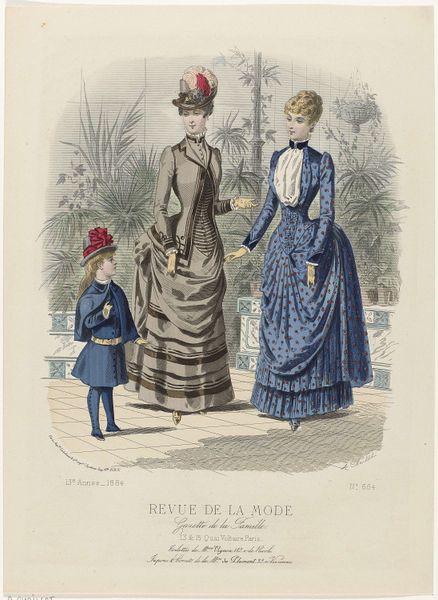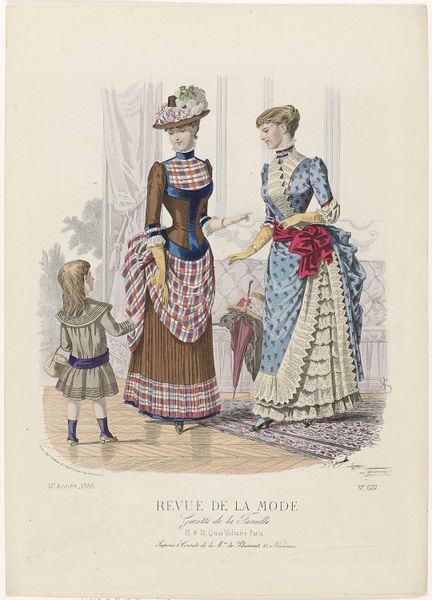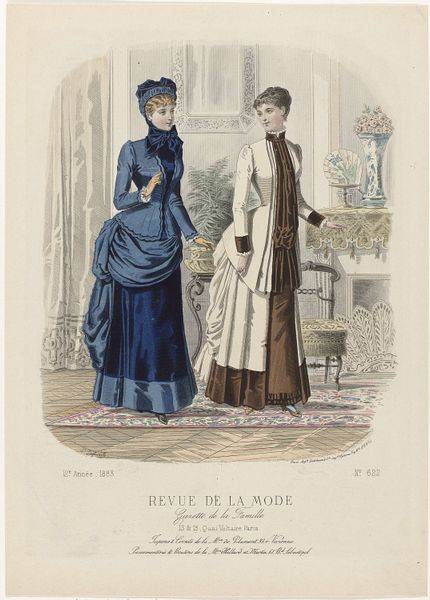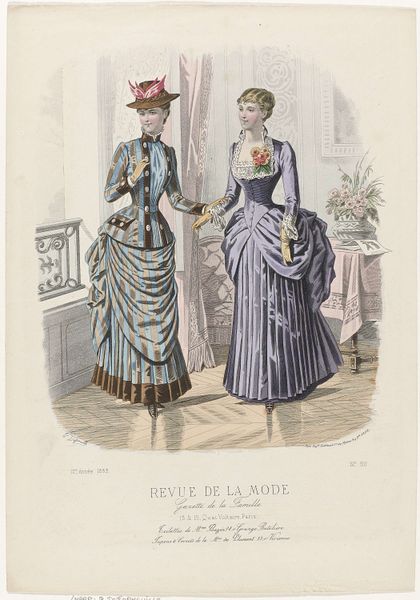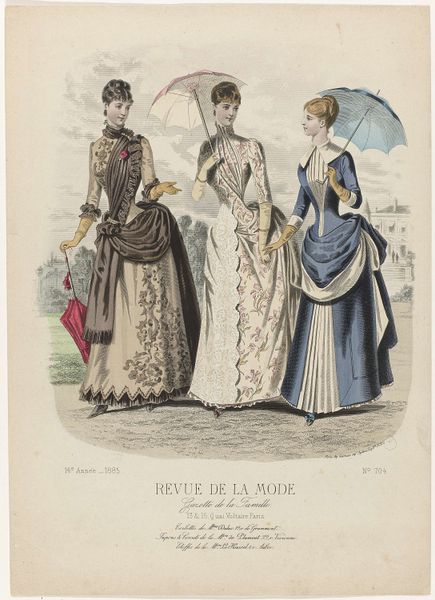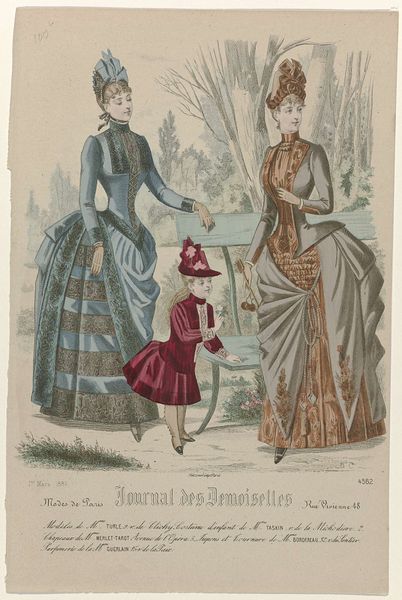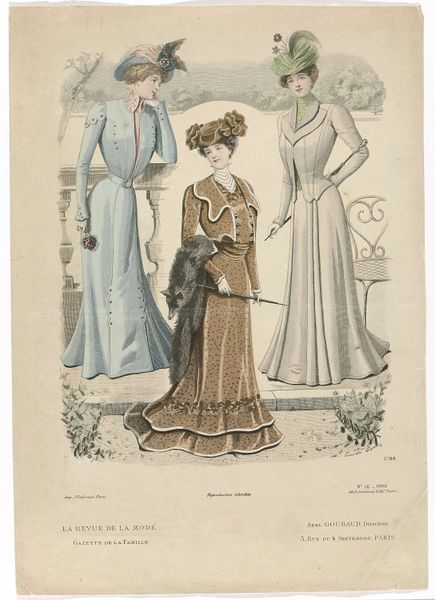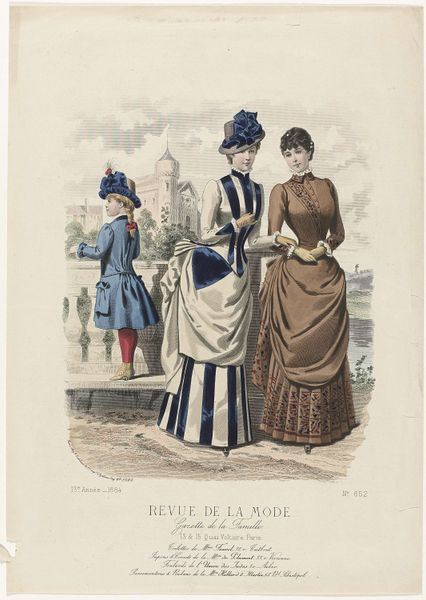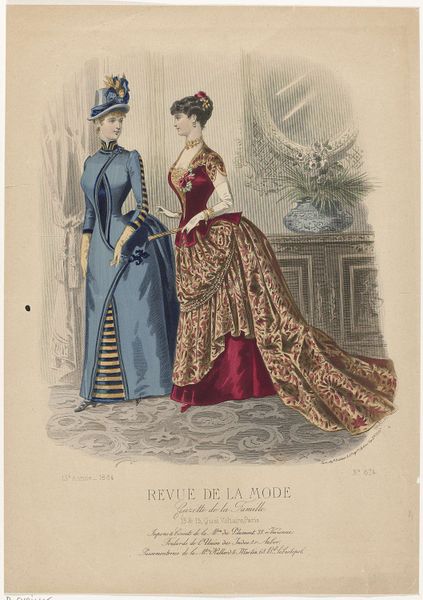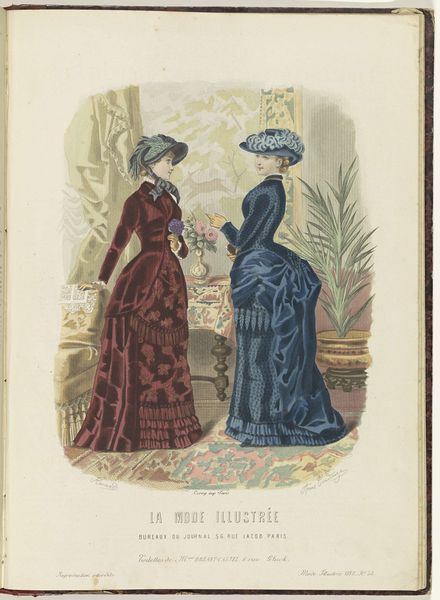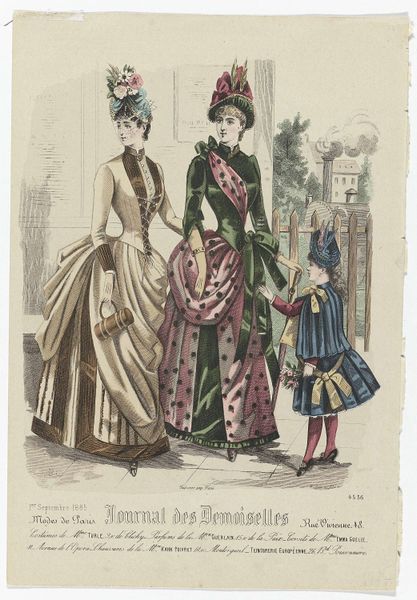
Revue de la Mode, Gazette de la Famille, 1884, 13e annee, No. 639: Toilettes de Mme Bazin (...) 1884
0:00
0:00
Dimensions: height 375 mm, width 268 mm
Copyright: Rijks Museum: Open Domain
Editor: Here we have "Revue de la Mode, Gazette de la Famille" from 1884, an image crafted by A. Chaillot using lithograph, drawing, and textile elements. It's so striking how the garments take center stage. How should we interpret this image, keeping in mind it’s both fashion illustration and genre painting? Curator: Focus first on the materiality: the very means of production here are significant. Lithography allowed for the mass dissemination of fashion trends to a burgeoning middle class. These weren’t just drawings; they were blueprints for aspiration, dictating fabric choices, cuts, and the very shape of the female form. Editor: So the "drawing" element emphasizes design and the "textile" embodies aspirations and materialism. Where does "genre painting" fit into all this? Curator: Think about labor. Each element--the textile manufacture, the dressmaking itself, even the coloring of this print-- involved extensive human labor. These illustrations idealized the *products* of labor, but they obscured the conditions in which that labor was performed. The rise of ready-to-wear was slowly changing all this, threatening established tailors while employing new, largely female workforces. Editor: Ah, so the illustration becomes almost like propaganda for a particular mode of consumption! A tool for capitalist interests through promoting new designs. Curator: Precisely! And consider the female gaze implicit here – this isn't necessarily a male artist dictating taste, but rather a potential conversation *between* women, mediated through the materials and circulation of fashion itself. The clothing on display is literally supported by layers of textiles, with class structures supported by even more complex systems of materials, production, and marketing! Editor: That makes me think so much more deeply about how art engages with production, not just presentation. Curator: Exactly. It pushes us to examine how "art" itself gets made, circulated, and consumed within broader social fabrics.
Comments
No comments
Be the first to comment and join the conversation on the ultimate creative platform.
